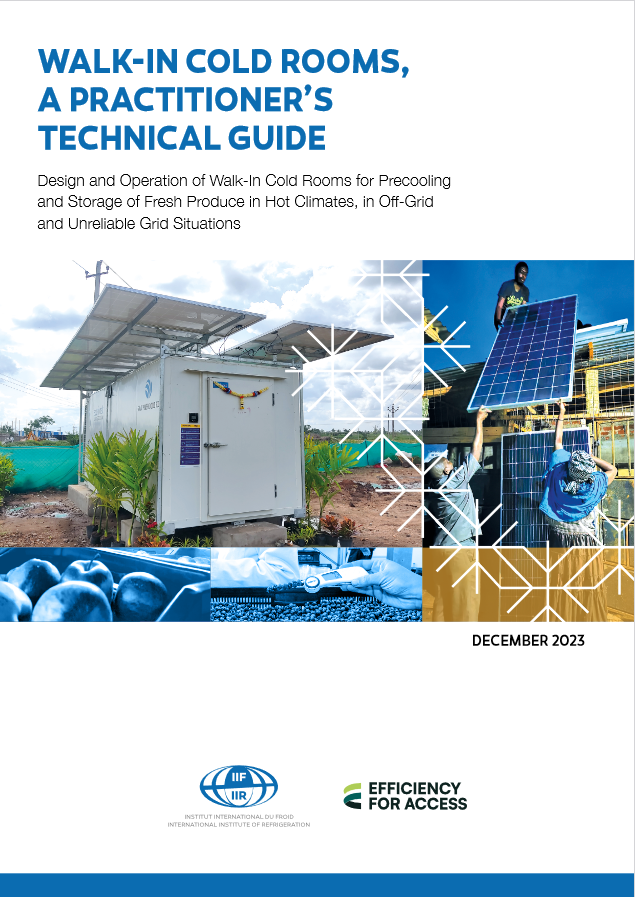Walk-In Cold Rooms: A Practitioner’s Technical Guide
In many developing countries, agriculture is crucial to livelihoods, and developing the cold chain from field to table can boost incomes and stimulate economic growth. Cold stores are an essential link in the cold chain, which aims to preserve the safety, quality and nutritional value of food.
The challenge of walk-in cold rooms: Cold rooms face extreme challenges when operating in locations far from reliable power supplies, supply chains and technical support, and in hot climates.
An essential technical guide: "Walk-in Cold Rooms: A Practitioner’s Technical Guide" aims to consolidate the current state of knowledge on the design and operation of cold rooms adapted to these different conditions.
International cooperation: The production of this guide is based on cooperation between the IIR and Efficiency for Access, with the contribution of the World Bank's ESMAP Efficient Clean Cooling programme. It is the fruit of the collaboration of more than 40 renowned experts and suppliers, notably in Africa and India, under the supervision of Giovanni Cortella and Jeremy Tait.
A green objective: This guide aims to promote environmental sustainability by presenting advice and practices to enable developers, owners and suppliers to specify, install and operate pre-coolers and cold stores with an emphasis on energy efficiency, the use of renewable energy sources and the selection of climate-friendly components.
Your step-by-step guide: This guide will accompany the project manager throughout the cold store procurement process, enabling him or her to interact effectively with specialists and suppliers, from the design phase through to the efficient operation of the cold store. It will also help suppliers to improve the design of their systems.
Universal application: The recommendations in this guide apply to all types of commercially available small cold store, designed to pre-cool and store fresh horticultural and agricultural produce close to farms or in rural assembly centres, communities or markets, controlling temperature, humidity and gas concentrations to maintain product quality.

